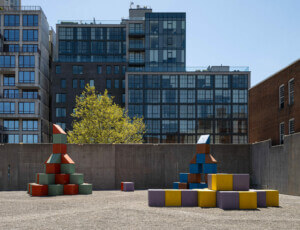On Manhattan’s East River the intersection between art and the battle against climate change is alive with a new temporary installation. Joined an Avalanche, Never to be Alone Again by Spanish-born and Brooklyn-based artist Carlos Irijalba reflects on the escalating climate crisis through a three-part installation made of recycled materials situated along the East River’s seawall, just west of the Corlears Hook Park.
As floods continue to threaten New York City, numerous coastal protection initiatives have surfaced with an aim to reduce flood risks from storms and the rising sea levels. Along Manhattan’s Lower East Side, the East Side Coastal Resiliency (ESCR) project is underway where Irijalba’s installation is situated. The massive infrastructure project will result in a 2.4-mile barrier composed of walls and flood gates across the river’s seawall, to offer both protection and recreational space for the neighboring Lower East Side community, according to the NYC Department of Design and Construction (DDC).
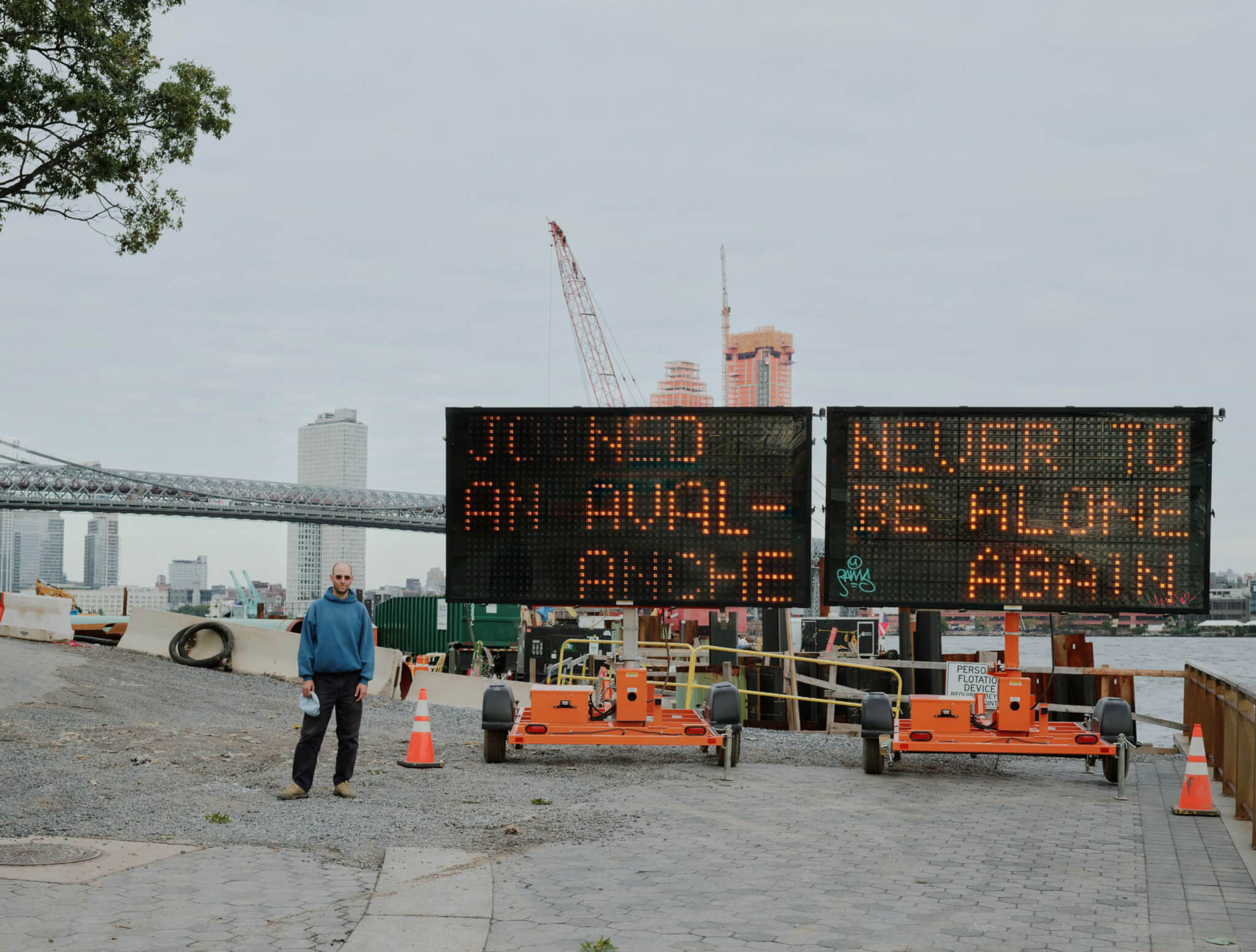
Irijalba’s installations have been realized through the NYC Department of Cultural Affairs’s (DCLA) Public Artists in Residence (PAIR) program which the artist has been a part of since November 2022. PAIR artists work alongside city agencies and public servants to bring “their creative practice to bear on pressing civic challenges,” a press release stated. While in residence, the Spanish-born artist paired up with the NYC Department of Design and Construction (DDC) and DCLA to contribute to the ESCR project.
Made up of asphalt, discarded fencing, and core sample drillings, Irijalba reflects on the future and resilience efforts using the raw materials that makeup New York City through his three-part commission.
“Sustainability isn’t always aesthetically satisfying, but it’s a necessary commitment to citizenship in the 21st century,” Irijalba said. The installation materializes the effects climate change will have on the city’s coats, and uses the climate mitigation project as his canvas.
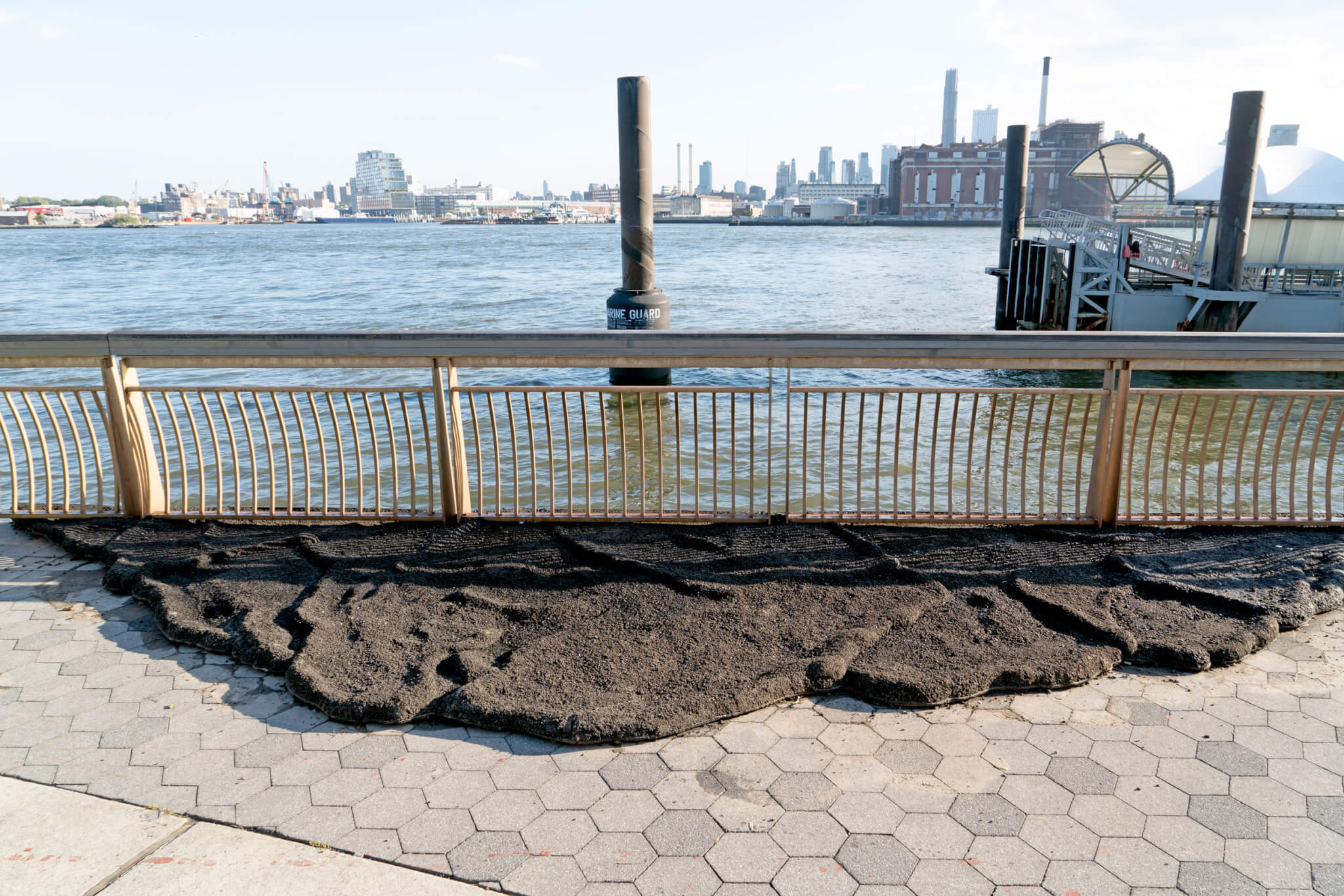
The Wave
The first part of the installation is a 1:1 scale low-tide wave creeping in from the river into the sidewalk, mimicking the beginning of a flood. The 30-by 7-foot tidal wave sculpture is made of 100 percent recycled asphalt, which “pushes across the East River’s barrier like a preserved lava spill,” Irijalba said, “reminding us of what was here before and what this same place might become.” The materials come from what Irijalba refers to as a “relentless digestive system,” a process where asphalt from broken streets are used for the city’s road maintenance.
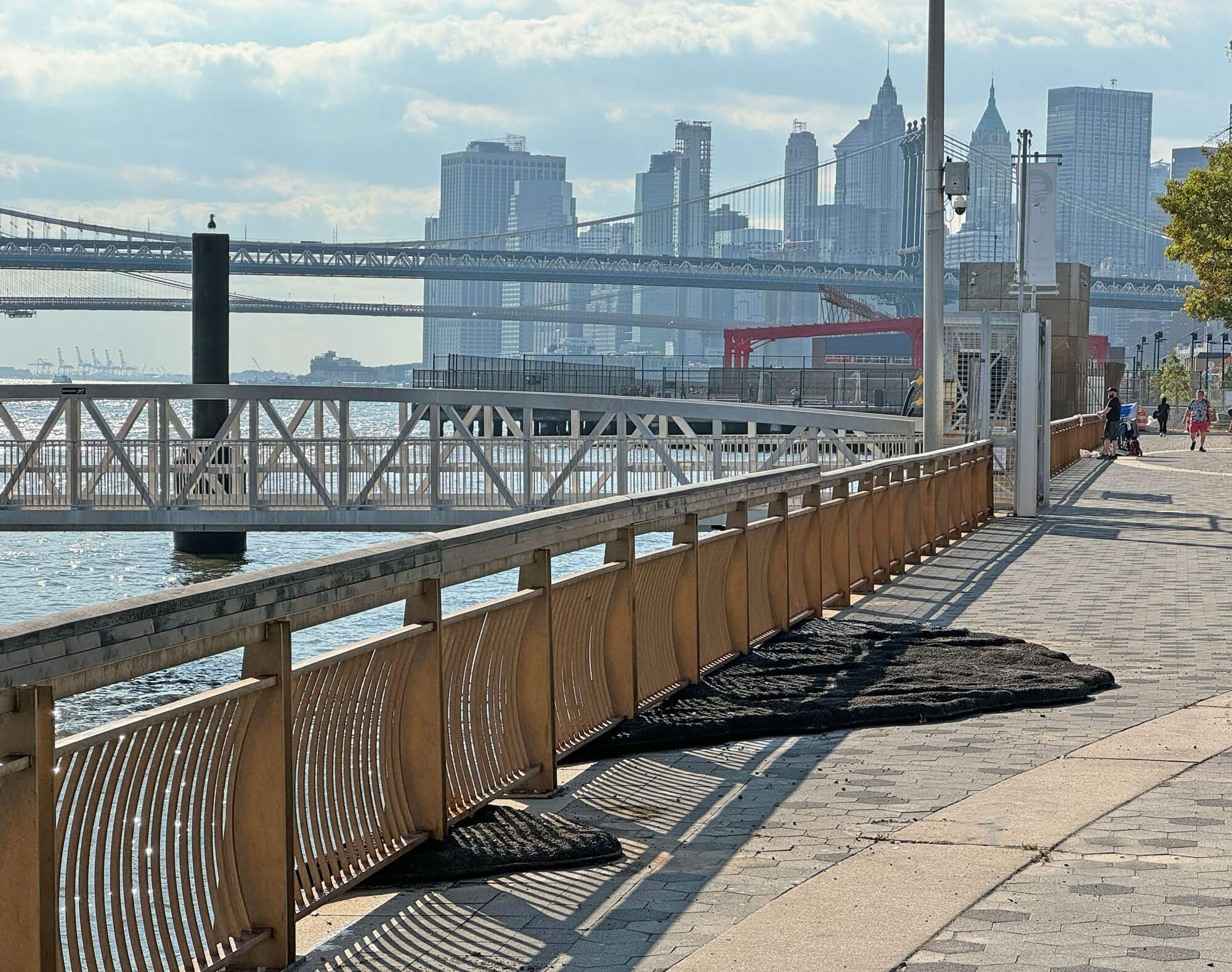
The Fence
Adjacent to The Wave, Irijalba’s other work uses repurposed fencing material from the Franklin D. Roosevelt East River Drive. The Fence adorns the 70 feet of repurposed fencing with images of unexpected animals. From land to sea animals, different species survive in coastal habitats, and Irijalba highlights “interpecies coexistence” on the East River.
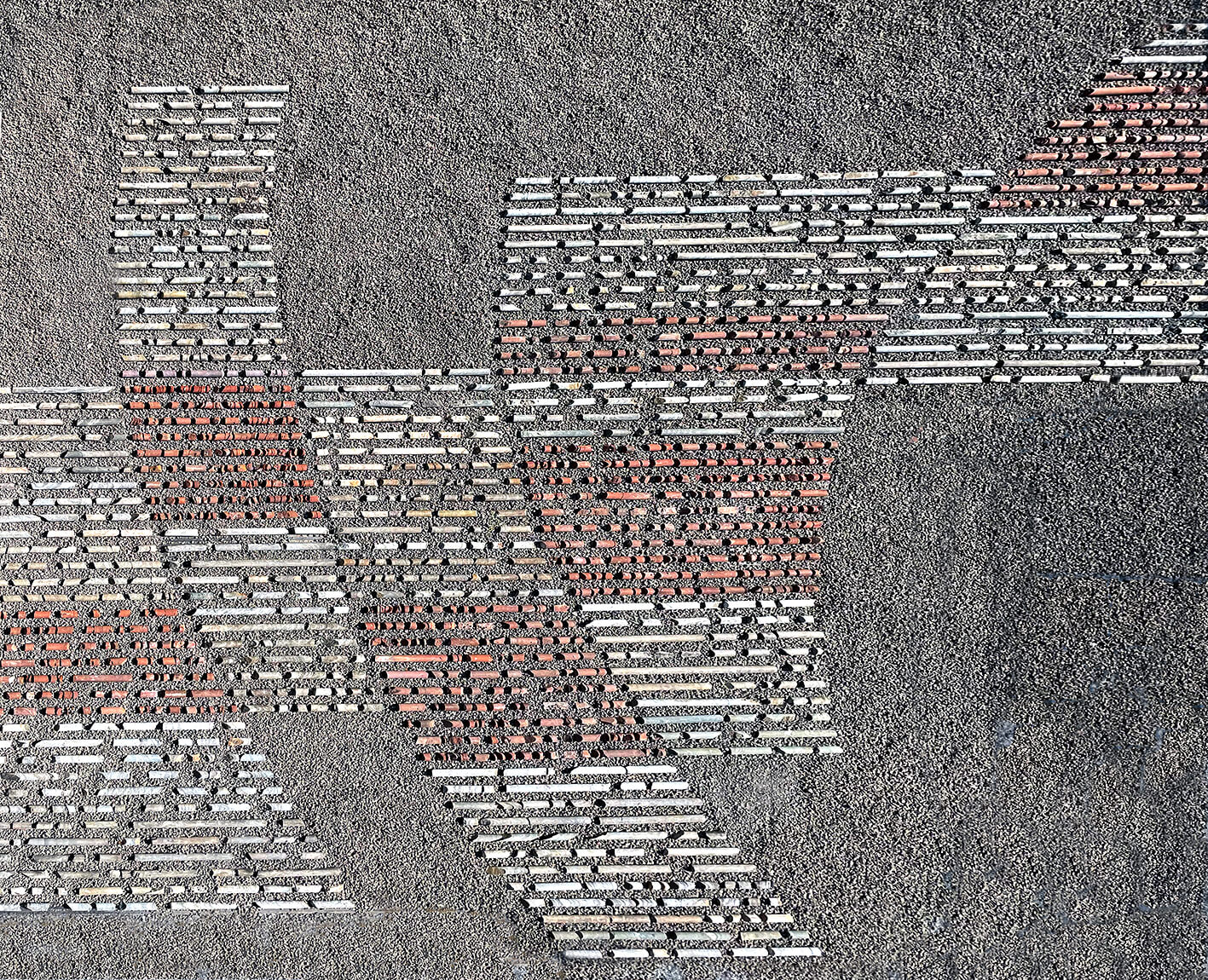
Pannotia
Joined an Avalanche, Never to be Alone Again’s final component is a continuation of Irijalba’s previous explorations. Pannotia explores core samples, or geotechnical drillings, a routine procedure in New York City’s urban planning projects. Geotechnical drillings extract samples from the ground to understand the bedrock’s composition, this in turn determines a construction’s limitations. Pannotia (2023) and its previous counterparts are sculptures that view layers of bedrock from real site-specific drilling samples displayed in the area where they are sourced. Joined an Avalanche, Never to be Alone Again (2023)’s commission is Irijalba’s largest Pannotia sculpture yet.
Joined an Avalanche, Never to be Alone Again will be on view through November 15.








